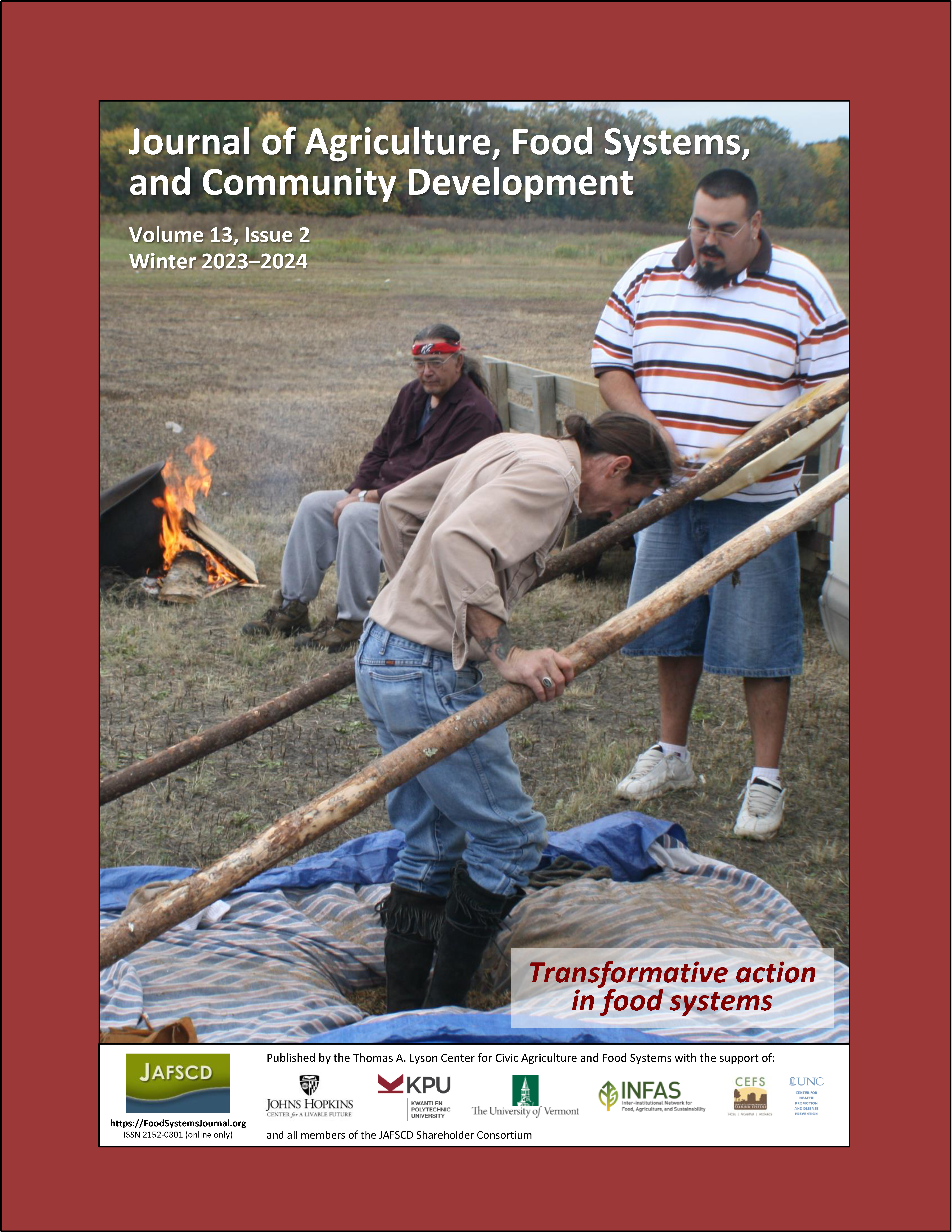Disparities in COVID-19 vaccine uptake, attitudes, and experiences between food system and non–food system essential workers
DOI:
https://doi.org/10.5304/jafscd.2024.132.012
Keywords:
COVID-19, COVID-19 vaccine, essential workers, food system, food security, occupational health, agriculture workers, food workers, health equity, vaccine equityAbstract
The COVID-19 pandemic has disproportionately affected the health of food system (FS) essential workers compared with other essential and non-essential workers. Even greater disparity exists for workers in certain FS work settings and for certain FS worker subpopulations. We analyzed essential worker respondents (n = 151,789) in May–November 2021 data from the National Immunization Survey Adult COVID Module (NIS-ACM) to assess and characterize COVID-19 vaccination uptake (≥1 dose) and intent (reachable, reluctant), attitudes about COVID-19 and the vaccine, and experiences and difficulties getting the vaccine. We compared rates, overall and by certain characteristics, between workers of the same group, and between FS (n = 17,414) and non–food system (NFS) worker groups (n = 134,375), to determine if differences exist. FS worker groups were classified as “agriculture, forestry, fishing, or hunting” (AFFH; n = 2,730); “food manufacturing facility” (FMF; n = 3,495); and “food and beverage store” (FBS; n = 11,189). Compared with NFS workers, significantly lower percentages of FS workers reported >1 dose of COVID-19 vaccine or vaccine requirements at work or school, but overall vaccine experiences and difficulties among vaccinated FS workers were statistically similar to NFS workers. When we examined intent regarding COVID-19 vaccination among unvaccinated FS workers compared with NFS counterparts, we found a higher percentage of FMF and FBS workers were reachable whereas a higher percentage of AFFH workers were reluctant about vaccination, with differences by sociodemographic characteristics. Overall, results showed differences in uptake, intent, and attitudes between worker groups and by some sociodemographic characteristics. The findings reflect the diversity of FS workers and underscore the importance of collecting occupational data to assess health inequalities and of tailoring efforts to worker groups to improve confidence and uptake of vaccinations for infectious diseases such as COVID-19. The findings can inform future research, adult infectious disease interventions, and emergency management planning.
Metrics
Downloads
Published
How to Cite
Issue
Section
Categories
License
Copyright (c) 2024 Brianna L. Smarsh, David Yankey, Mei-Chuan Hung, Heidi M. Blanck, Jennifer L. Kriss, Michael A. Flynn, Peng-Jun Lu, Sherri McGarry, Adrienne C. Eastlake, Alfonso Rodriguez Lainz, James A. Singleton, Jennifer M. Lincoln

This work is licensed under a Creative Commons Attribution 4.0 International License.
The copyright to all content published in JAFSCD belongs to the author(s). It is licensed as CC BY 4.0. This license determines how you may reprint, copy, distribute, or otherwise share JAFSCD content.














